As I stared out from that wooden dock at the multi-hued turquoise water in front of me, I could understand why I’d heard so much about the Twin Lagoon in Coron, Palawan. It’s one of the most famous places in the Philippines and when you see it for yourself, you understand why.
“Three days it took me to get here,“ said a starry-eyed girl from Morocco as she surveyed the view before us, “It was worth it,” she sighed contentedly. I felt the same way. Despite the crowds and the jellyfish, which I’ll get into later, I was still pleased to play Ariel in this watery kingdom for a few hours.
The Twin Lagoon is what it sounds like – a pair of dazzling blue lagoons set amongst a backdrop of vertical, black, jagged karst walls on Coron Island. It’s one of the main things that people hope to see when they visit Coron and naturally, I wanted to see it too. I learned a lot about what to do and what not to do, so here’s the tea:
Getting to the Twin Lagoon
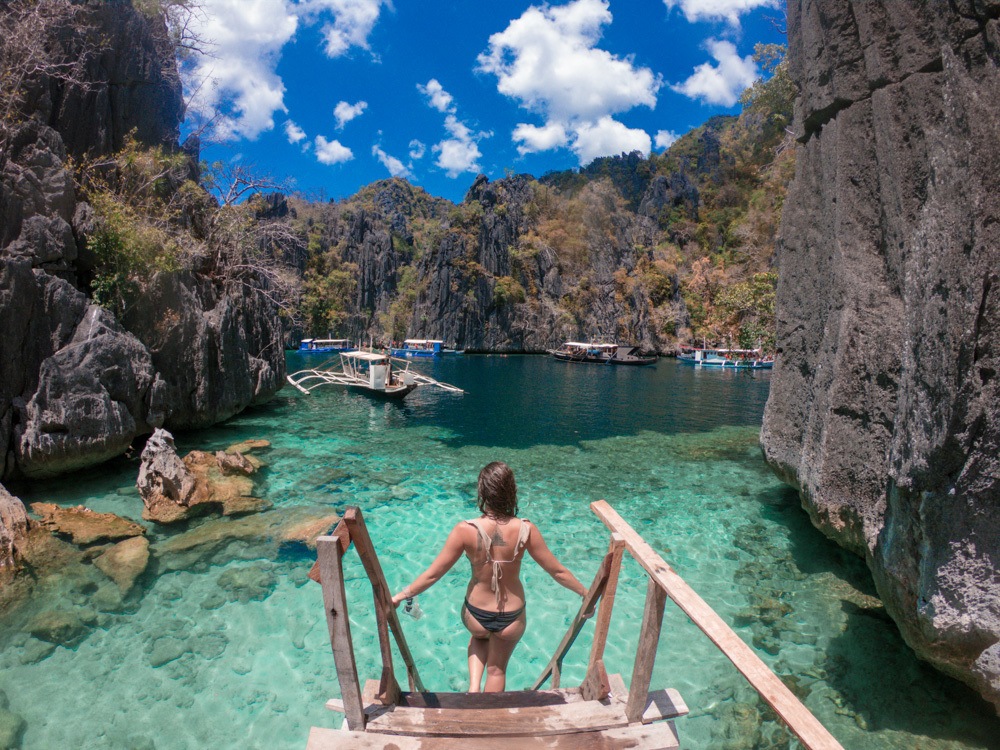
The only way to get to the Twin Lagoon is to take a boat. If you have a look at the menu of island hopping excursions posted all around Coron town, you’ll be able to pick an option that includes this stop. Most group tours run from 1200-1700 pesos depending on the stops.
What I recommend and what I did was to take my own boat, shared with a few others from my guesthouse, which ultimately worked out cheaper and gave us more flexibility. I was able to spend as much time as I wanted swimming through the lagoon rather than being beholden to the tour schedule or holding a big group of other people up.
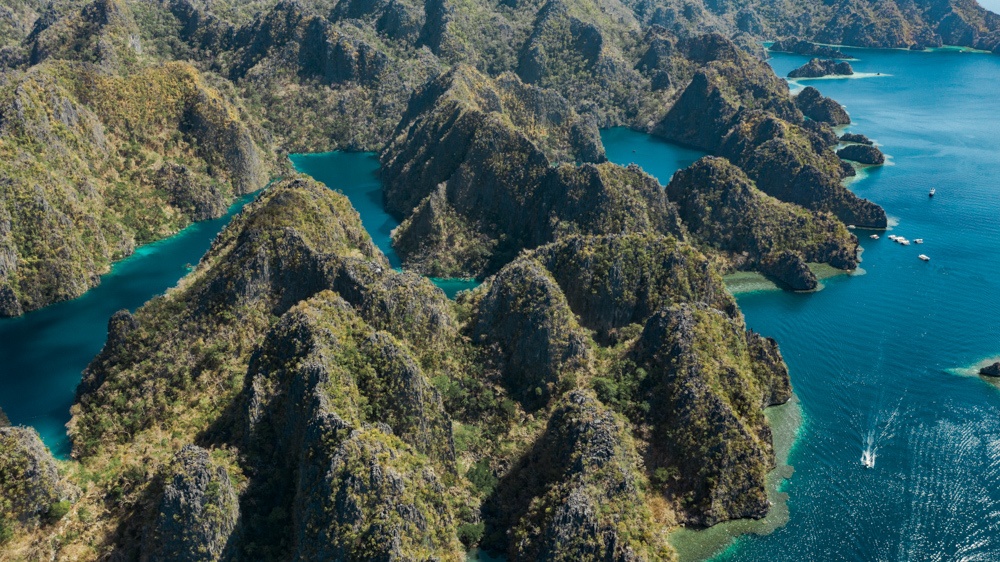
Most private tours can be organized through your accommodation for just the boat alone, and usually cost around 3000 pesos. If you want food or snorkeling gear, that’s extra, as is every stop you make while on the boat. However I found that by going directly to the source at the Calamian dock, I was able to pay just 2700 pesos for the boat. This is the cheapest way to do it if you’re willing to put in just a little bit of extra effort. Typically a tricycle ride to get to the port will cost about 25 pesos per passenger, so although the savings isn’t huge, it’s still well worth your effort to go independently. The Twin Lagoon is an extra 200 pesos per person on top of that.
When to Go
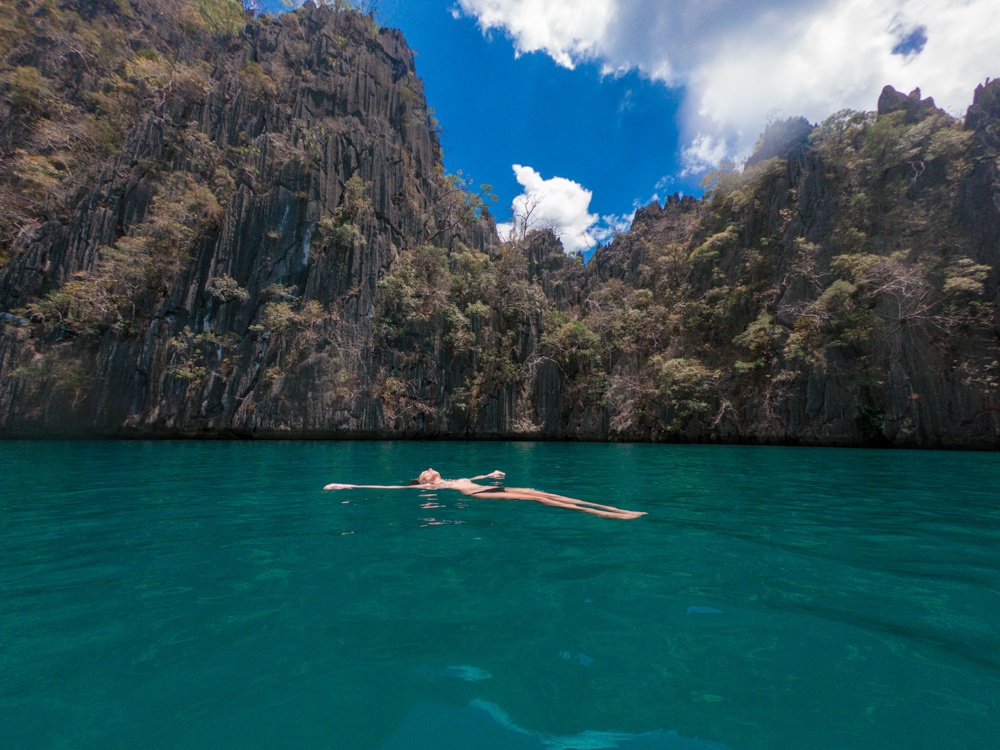
When we talk about when to go, there are two things to consider: time of day and time of year. Let’s talk about time of day first.
The Twin Lagoon is one of the most popular stops in Coron, and it’s difficult to get it all to yourself. That said, you could try to be the first boat there in the morning by heading out earlier than everyone else. To do this, I would negotiate directly at the port the day before and secure your ticket ahead of time, as the Twin Lagoon and a couple of other stops, like Kayangan Lake, require tickets for entry, or you can ask your accommodation to help you set it all up. If you can get there by 7 AM, you should be able to get it more or less to yourself. When I went around two in the afternoon, it was absolutely full of people. I would have loved to see it without the crowds, however even if you can’t get there early and get it all to yourself, it’s beautiful and you can still enjoy it with others around.
Sharing the experience didn’t ruin it for me like it did at Kayangan Lake, which is the other most popular stop in Coron and a much smaller area.
Next let’s talk about time of year. For the most part, anytime is good to go but keep in mind that in the months just before the rainy season, which are April and May, there are more jellyfish in the water than usual.
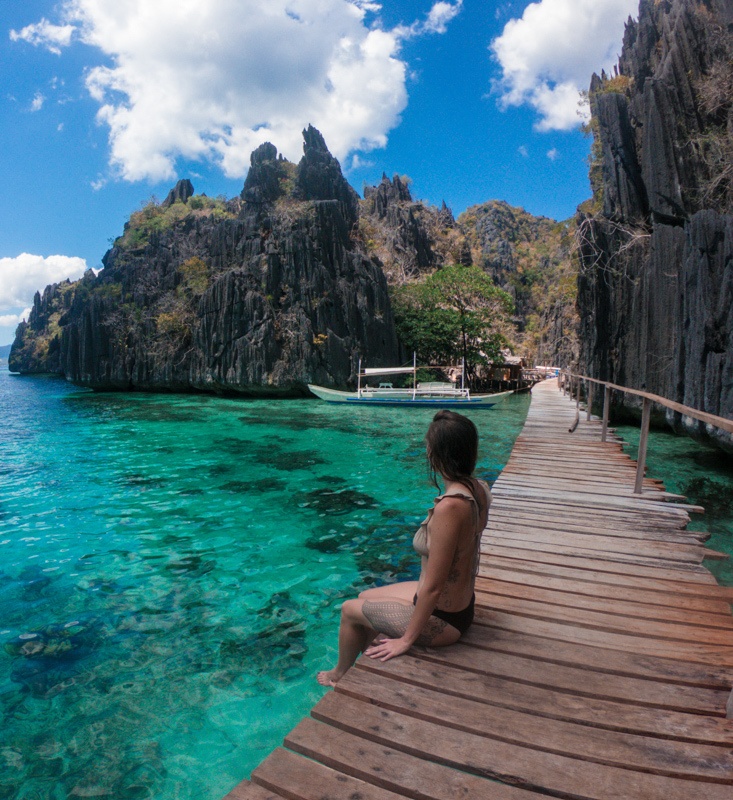
I, unfortunately, wasn’t aware of this when planning out my trip to Coron. The Twin Lagoon was full of, seriously, thousands of tiny jellyfish. I don’t actually think that everybody reacts to them, because out of everyone in my group, I was the only one who came out full of blotches. Strangely, I never felt them sting me, either. But I was suffering from suddenly painful and itchy stings that night, almost like a rash. Add that to the giant jellyfish I accidentally got into a tangle with in Romblon and I was literally covered from neck to toes. Would I do it again? Hell yeah! But I would probably bring a rash guard with the benefit of hindsight.
Things to Know About the Twin Lagoon
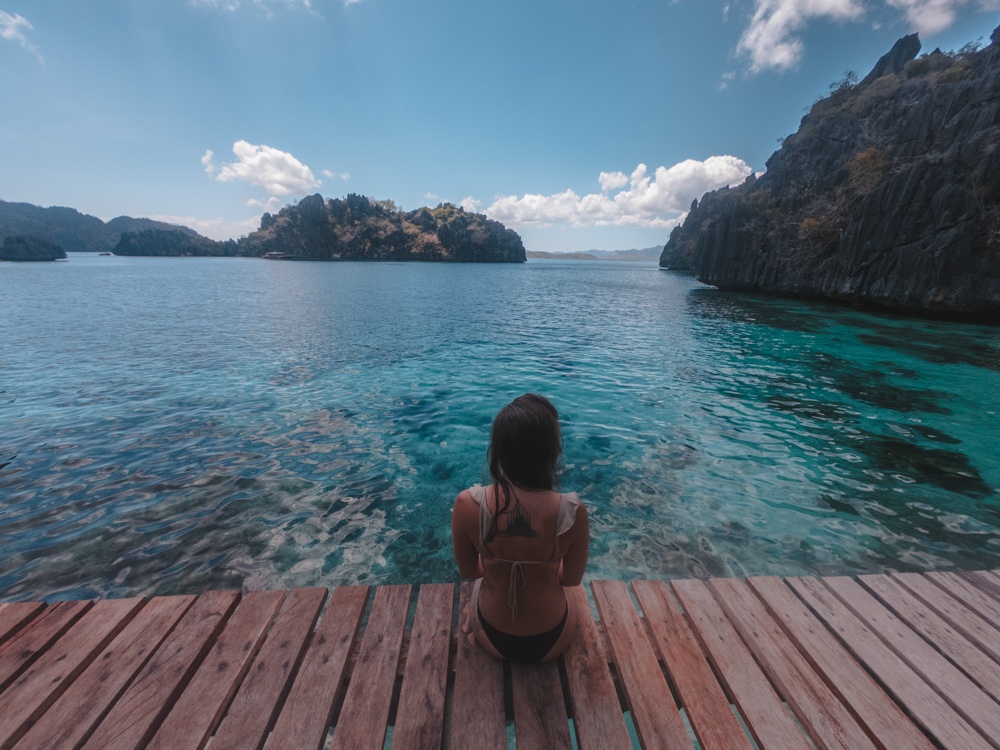
One thing that I found a bit frustrating and unfortunate about the major tourist sites in Palawan is the life jacket requirement. Even though there are no waves in the Twin Lagoon and it’s easy to swim through, everyone is required to wear a life jacket, or at least have one in their possession.
I’m not used to this, so it inhibits my ability to swim. Truth be told, I swam in partway and then tossed my life jacket onto a rock and then continued onward. I ran into a similar issue with the Big Lagoon in El Nido and observed the rule by bringing in the life jacket but sort of skirted the fine print by fastening it to a buoy and doing most of my swimming without it. Normally I think it’s important to follow the rules but this one has nothing to do with protecting nature and is more about keeping people afloat who, unlike me, aren’t strong swimmers. Thankfully there’s nobody around to enforce the rule anyways.
The other thing to keep in mind is that the area is more than the first body of water you come to. You will see a lifeguard station straight ahead which you can swim under to get to the second part of the lagoon. If you continue past the buoys, you can get to a dock which has some awesome photo opportunities and fewer people around as well. I think technically this isn’t the Twin Lagoon anymore, but I highly recommend checking it out.
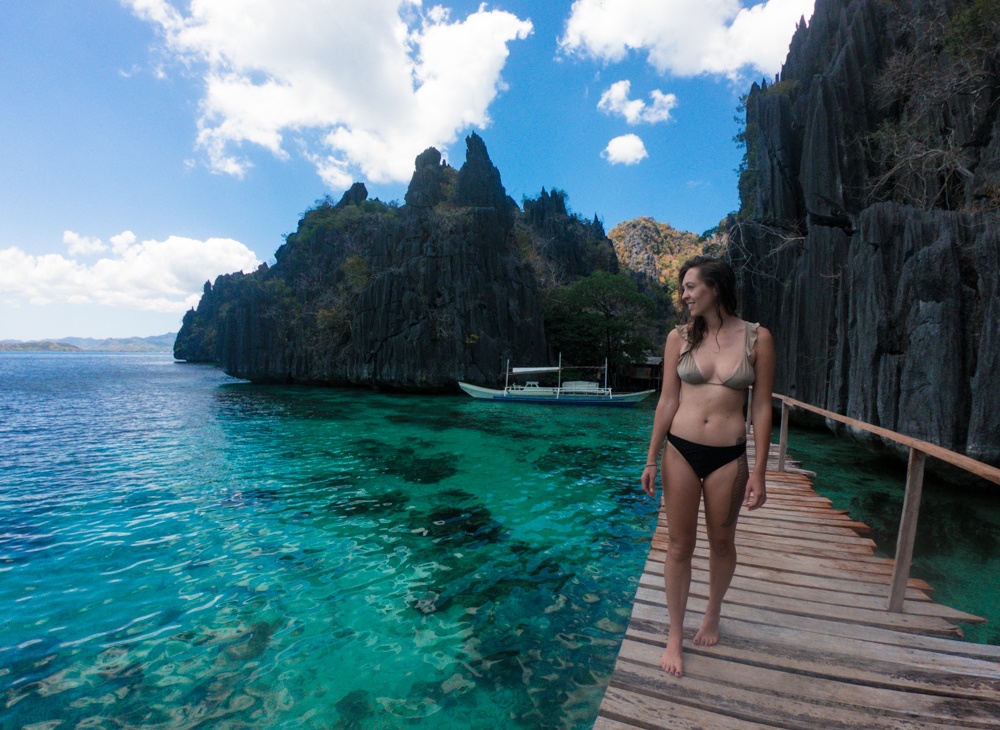
After we finished at the Twin Lagoon, I asked my guide if we could relocate to the dock pictured above, which he said was privately owned and would require another entrance fee. However it seems to me that you could just stop there instead of the normal Twin Lagoon entry area, and get a slightly more secluded experience. It might be worth a try, if you want to show your guide the photo above.
Overall, I can see why Twin Lagoon is so popular. It’s lovely to swing through, probably especially when there aren’t jellyfish blooms, and it’s hard to imagine anywhere in the world that looks quite like it. Though I wish I had seen it in the early morning hours without people, I’m still glad I saw it, crowds and all. If you’re island hopping in Coron, definitely stop by and give it at least an hour of your time. Be sure to bring your (waterproof) camera, the pictures are amazing.

Leave a Reply